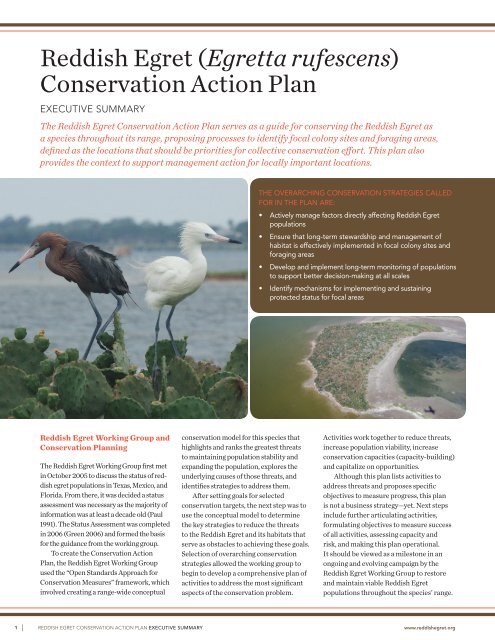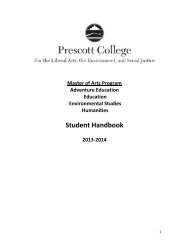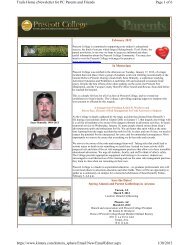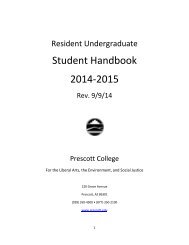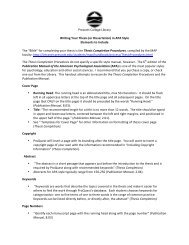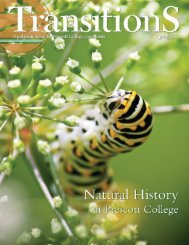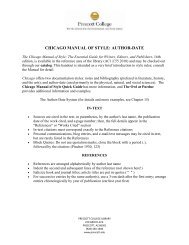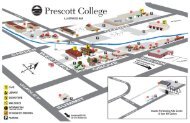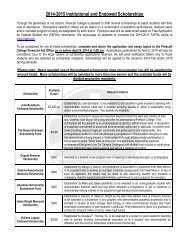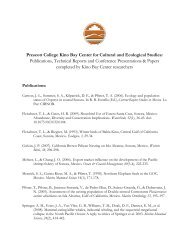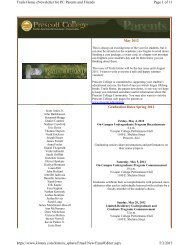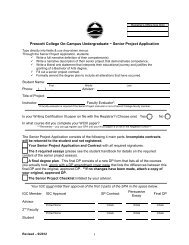Reddish Egret (Egretta rufescens) Conservation Action Plan
Reddish Egret (Egretta rufescens) Conservation Action Plan
Reddish Egret (Egretta rufescens) Conservation Action Plan
Create successful ePaper yourself
Turn your PDF publications into a flip-book with our unique Google optimized e-Paper software.
<strong>Reddish</strong> <strong>Egret</strong> (<strong>Egret</strong>ta <strong>rufescens</strong>)<br />
<strong>Conservation</strong> <strong>Action</strong> <strong>Plan</strong><br />
EXECUTIVE SUMMARY<br />
The <strong>Reddish</strong> <strong>Egret</strong> <strong>Conservation</strong> <strong>Action</strong> <strong>Plan</strong> serves as a guide for conserving the <strong>Reddish</strong> <strong>Egret</strong> as<br />
a species throughout its range, proposing processes to identify focal colony sites and foraging areas,<br />
defined as the locations that should be priorities for collective conservation effort. This plan also<br />
provides the context to support management action for locally important locations.<br />
THE OVERARCHING CONSERVATION STRATEGIES CALLED<br />
FOR IN THE PLAN ARE:<br />
• Actively manage factors directly affecting <strong>Reddish</strong> <strong>Egret</strong><br />
populations<br />
• Ensure that long-term stewardship and management of<br />
habitat is effectively implemented in focal colony sites and<br />
foraging areas<br />
• Develop and implement long-term monitoring of populations<br />
to support better decision-making at all scales<br />
• Identify mechanisms for implementing and sustaining<br />
protected status for focal areas<br />
<strong>Reddish</strong> <strong>Egret</strong> Working Group and<br />
<strong>Conservation</strong> <strong>Plan</strong>ning<br />
The <strong>Reddish</strong> <strong>Egret</strong> Working Group first met<br />
in October 2005 to discuss the status of reddish<br />
egret populations in Texas, Mexico, and<br />
Florida. From there, it was decided a status<br />
assessment was necessary as the majority of<br />
information was at least a decade old (Paul<br />
1991). The Status Assessment was completed<br />
in 2006 (Green 2006) and formed the basis<br />
for the guidance from the working group.<br />
To create the <strong>Conservation</strong> <strong>Action</strong><br />
<strong>Plan</strong>, the <strong>Reddish</strong> <strong>Egret</strong> Working Group<br />
used the “Open Standards Approach for<br />
<strong>Conservation</strong> Measures” framework, which<br />
involved creating a range-wide conceptual<br />
conservation model for this species that<br />
highlights and ranks the greatest threats<br />
to maintaining population stability and<br />
expanding the population, explores the<br />
underlying causes of those threats, and<br />
identifies strategies to address them.<br />
After setting goals for selected<br />
conservation targets, the next step was to<br />
use the conceptual model to determine<br />
the key strategies to reduce the threats<br />
to the <strong>Reddish</strong> <strong>Egret</strong> and its habitats that<br />
serve as obstacles to achieving these goals.<br />
Selection of overarching conservation<br />
strategies allowed the working group to<br />
begin to develop a comprehensive plan of<br />
activities to address the most significant<br />
aspects of the conservation problem.<br />
Activities work together to reduce threats,<br />
increase population viability, increase<br />
conservation capacities (capacity-building)<br />
and capitalize on opportunities.<br />
Although this plan lists activities to<br />
address threats and proposes specific<br />
objectives to measure progress, this plan<br />
is not a business strategy—yet. Next steps<br />
include further articulating activities,<br />
formulating objectives to measure success<br />
of all activities, assessing capacity and<br />
risk, and making this plan operational.<br />
It should be viewed as a milestone in an<br />
ongoing and evolving campaign by the<br />
<strong>Reddish</strong> <strong>Egret</strong> Working Group to restore<br />
and maintain viable <strong>Reddish</strong> <strong>Egret</strong><br />
populations throughout the species’ range.<br />
1 | REDDISH EGRET CONSERVATION ACTION PLAN EXECUTIVE SUMMARY www.reddishegret.org
Species Description<br />
The <strong>Reddish</strong> <strong>Egret</strong> is the rarest and least<br />
known of the egrets and herons of North<br />
America. The population lies within<br />
a narrow latitudinal range extending<br />
east from the Baja California peninsula,<br />
including the Gulf of California, the<br />
Yucatan Peninsula, the northern coast of<br />
Gulf of Mexico to peninsular Florida and<br />
islands in the Caribbean basin, namely<br />
Bahamas and Cuba. The global population<br />
of <strong>Reddish</strong> <strong>Egret</strong>s is estimated to be<br />
5,000 – 7,000 individuals, with 3,500 to<br />
4,250 breeding pairs. The <strong>Reddish</strong> <strong>Egret</strong><br />
is an international resource, with Mexico<br />
and the U.S. appearing to support about<br />
equally the bulk of the global breeding<br />
population, complemented by a number<br />
of Central American and Caribbean<br />
nations. Despite its large range, the<br />
<strong>Reddish</strong> <strong>Egret</strong> occupies a restricted belt of<br />
coastal habitat, is patchily distributed and<br />
has a relatively small and declining global<br />
population. Accordingly there is broad<br />
agreement that the <strong>Reddish</strong> <strong>Egret</strong> is in<br />
need of our conservation effort.<br />
Status<br />
<strong>Reddish</strong> <strong>Egret</strong>s are federally listed<br />
as a species of special concern in<br />
Mexico (NOM-059-SEMARNAT-2010,<br />
SEMARNAT 2010) and as a Bird of<br />
<strong>Conservation</strong> Concern in the U.S.<br />
(USFWS 2008). Likewise, it was identified<br />
as a regional priority species in need<br />
of Critical Recovery or Immediate<br />
Management in the 2006 Southeast U.S.<br />
Waterbird <strong>Conservation</strong> <strong>Plan</strong> (Hunter<br />
et al. 2006). The species is listed as<br />
Near Threatened on the IUCN Red List<br />
of Threatened Species, and labeled as<br />
“red,” or species of greatest conservation<br />
concern, on Audubon’s Watchlist due<br />
to its moderately small population and<br />
suspected population declines (Butcher et<br />
al. 2007, IUCN 2009).<br />
Given that there are two subspecies<br />
of <strong>Reddish</strong> <strong>Egret</strong>, and that threats and<br />
management situations vary greatly across<br />
the hemispheric range of the species, three<br />
management units – Eastern, Central, and<br />
Western – were identified for purposes of<br />
conservation planning.<br />
Direct threats to <strong>Reddish</strong><br />
<strong>Egret</strong> Populations and<br />
Habitats<br />
• Elevated predation from<br />
predators associated with<br />
human activities<br />
• Human disturbance due to<br />
recreational and commercial<br />
activities<br />
• Habitat shifting and alteration<br />
from sea-level rise and<br />
subsidence<br />
• Increased frequency and<br />
intensity of storms and<br />
flooding<br />
• Tourism and residential<br />
development<br />
• Coastal engineering<br />
• Marine transportation<br />
• Energy development<br />
• Invasive species<br />
• Local ranching and other land<br />
use activities<br />
• Shrimp aquaculture<br />
Goals<br />
Population Goals<br />
Area<br />
Eastern<br />
Management Unit<br />
Central<br />
Management Unit<br />
Western<br />
Management Unit<br />
Current Population<br />
Estimate<br />
Population Goals<br />
700 breeding pairs 1,400 breeding pairs<br />
2,750 breeding pairs 4,600 breeding pairs<br />
800 breeding pairs 1,500 breeding pairs<br />
Global Population 4,250 breeding pairs 7,500 breeding pairs<br />
Objectives Associated with Strategies<br />
Nesting Habitat Goals<br />
• Interim Goal: Establish,<br />
maintain and increase<br />
habitat at focal colony<br />
sites, defined as the<br />
locations that should be<br />
priorities for collective<br />
conservation effort. A<br />
list of the proposed focal<br />
colony sites is available<br />
at the reddishegret.org<br />
website.<br />
• Anticipated Goal:<br />
A quantitative goal for<br />
focal colony sites.<br />
Foraging Habitat Goals<br />
• Interim Goal: Identify and<br />
protect foraging areas<br />
• Anticipated Goal: A<br />
quantitative goal for<br />
focal foraging areas.<br />
The Working Group is<br />
committed to compiling<br />
and mapping information<br />
on known foraging areas<br />
and identifying potential,<br />
currently unknown, areas.<br />
CONCEPTUAL MODEL<br />
FOR REDDISH EGRET<br />
CONSERVATION<br />
The conceptual model is a<br />
graphic summary of how the<br />
<strong>Reddish</strong> <strong>Egret</strong> Working Group<br />
envisions the context within<br />
which it is working and is<br />
used to brainstorm potential<br />
conservation strategies. It<br />
represents the Working Group’s<br />
common understanding of the<br />
overall situation surrounding<br />
conservation efforts for the<br />
<strong>Reddish</strong> <strong>Egret</strong> and its habitats<br />
(conservation targets), the main<br />
direct threats, and the social,<br />
cultural, political and economic<br />
factors that are contributing<br />
to those threats. This visual<br />
representation includes the<br />
conservation targets, critical<br />
threats, contributing factors, and<br />
strategies. Using the conceptual<br />
model to prioritize factors<br />
most in need of influence,<br />
the working group seeks to<br />
understand where intervention<br />
is necessary and/or effective –<br />
and also where it is not.<br />
Develop and implement long-term monitoring of<br />
populations to support better decision-making<br />
at all scales<br />
OBJECTIVES:<br />
• By November 2013, the <strong>Reddish</strong> <strong>Egret</strong> Working Group has<br />
compiled existing knowledge on focal breeding sites, including<br />
the nature and level of specific threats.<br />
• By this time, the group will have reached consensus on and<br />
applied criteria for the selection of focal colonies. By November<br />
2013, the <strong>Reddish</strong> <strong>Egret</strong> Working Group will have mapped known<br />
foraging areas based on existing data, and begun modeling<br />
potential, but unconfirmed foraging areas.<br />
• By 2015, the <strong>Reddish</strong> <strong>Egret</strong> Working Group has undertaken<br />
field studies to fill in gaps in knowledge about <strong>Reddish</strong> <strong>Egret</strong><br />
populations and their habitats across the range. This work will<br />
focus particularly on birds occurring in Caribbean and Central<br />
America as well as on confirming use of and threats to foraging<br />
areas throughout the range.<br />
• By 2015, the <strong>Reddish</strong> <strong>Egret</strong> Working Group has reached<br />
consensus on criteria for focal foraging areas and applied these to<br />
available maps.<br />
• By December 2013, the <strong>Reddish</strong> <strong>Egret</strong> Working Group has<br />
developed standardized protocols for counting breeding pairs on<br />
colonies, counting wintering birds, resightings, breeding habitat<br />
and foraging habitat.<br />
• By December 2013, a REEG Clearinghouse is established, a<br />
protocol for data entry is developed, and existing data input into<br />
the Clearinghouse.<br />
Actively manage factors directly affecting reddish egret<br />
populations<br />
OBJECTIVES:<br />
Invasive Species<br />
• Beginning in 2015, exotic fauna are actively managed and their<br />
effects are minimized on at least 75% of focal breeding sites<br />
affected by exotic fauna.<br />
Predation Rates<br />
• Beginning in 2015, all focal colonies are being monitored for the<br />
presence of predators.<br />
• Beginning in 2015, predators are controlled on at least 75% of<br />
focal colonies.<br />
• By 2016, fisherman in priority areas where offal disposal presents<br />
a problem are aware of the impacts of improper offal disposal on<br />
predation of <strong>Reddish</strong> <strong>Egret</strong>.<br />
Disturbance/Direct Harvest<br />
• By 2016, recreational boaters/fisherman/photographers/<br />
resource managers in priority areas where disturbance is a<br />
problem are aware of impacts to <strong>Reddish</strong> <strong>Egret</strong>.<br />
• Human disturbance trend is reduced by 25% by 5 years after<br />
launching outreach/enforcement campaigns.<br />
• By 2016, target groups participating in chick harvesting and<br />
egging activity are made aware so that they understand the status<br />
of <strong>Reddish</strong> <strong>Egret</strong> and the impact of this activity.<br />
• By 2016, chick harvesting and egging activity is reduced by 50 %<br />
2 | REDDISH EGRET CONSERVATION ACTION PLAN EXECUTIVE SUMMARY www.reddishegret.org REDDISH EGRET CONSERVATION ACTION PLAN EXECUTIVE SUMMARY www.reddishegret.org | 3
Ensure that the long-term stewardship and management of<br />
habitat is effectively implemented in focal colony sites and<br />
focal foraging areas<br />
OBJECTIVES:<br />
Development<br />
• None yet identified for tourism and residential development,<br />
but can be developed once goals for habitat are quantified.<br />
• By 2016, no further energy development will occur in the areas<br />
identified by the <strong>Reddish</strong> <strong>Egret</strong> Working Group as focal foraging areas.<br />
• By a date to be determined, an alliance of natural resource protection<br />
organizations has been formed to address appropriate siting of<br />
energy development in coastal areas with the stated goal that no<br />
further energy development occurs in the areas identified by<br />
the <strong>Reddish</strong> <strong>Egret</strong> Working Group as focal foraging areas.<br />
• By 2014, understand extent of existing problems caused by<br />
coastal engineering by assessing (through past observation<br />
or new study) effects at focal breeding and foraging sites.<br />
• By 2016, information is shared with the USACE about the<br />
positive effects of dredge spoil islands on <strong>Reddish</strong> <strong>Egret</strong><br />
breeding and US Army Corps of Engineers commits to<br />
further beneficial uses that would assist the species.<br />
Marine Transportation<br />
• From now until 2020, at least 80% of focal <strong>Reddish</strong> <strong>Egret</strong><br />
nesting habitat suffering erosion caused by marine<br />
transportation is maintained.<br />
• By 2016, decision-makers responsible for 50% of foraging<br />
areas with boating damage agree to limited closure areas.<br />
Identify mechanisms for implementing and<br />
sustaining protected status for focal areas<br />
Activities and Objectives under development.<br />
NEXT STEPS<br />
Our efforts towards <strong>Reddish</strong> <strong>Egret</strong> conservation<br />
need to continue on multiple fronts: additional<br />
planning at the range-wide scale, implementation<br />
of identified activities, and monitoring and<br />
sharing of associated results. Moreover, as this<br />
plan is range-wide in scope, from it must flow<br />
a business plan that lays out the details of local<br />
strategies and projects and develops actions that<br />
link funding to measurable conservation results.<br />
Rangewide Map of <strong>Reddish</strong> <strong>Egret</strong> Colonies<br />
BREEDING DISTRIBUTION<br />
OF REDDISH EGRETS<br />
Surveys within the last 5 years<br />
less than 10 pairs<br />
10 - 50 pairs<br />
51 - 100 pairs<br />
101 - 200 pairs<br />
greater than 200 pairs<br />
Surveys older than 5 years<br />
less than 10 pairs<br />
10 - 50 pairs<br />
greater than 50 pairs<br />
Unknown colony size<br />
0 250 500 1,000<br />
Kilometers<br />
4 | REDDISH EGRET CONSERVATION ACTION PLAN EXECUTIVE SUMMARY www.reddishegret.org


